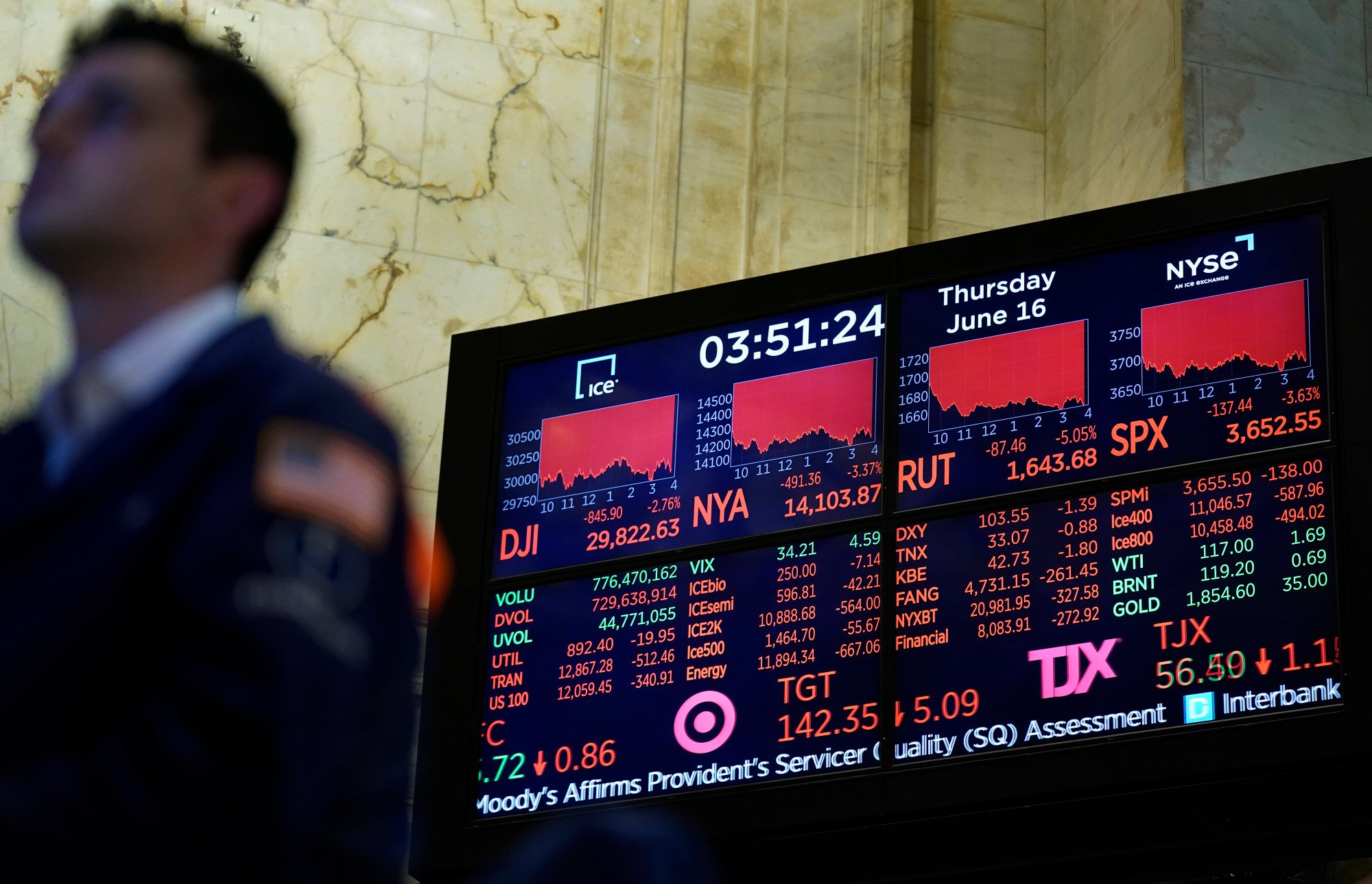
Why the future looks brighter for equity markets in Asia than in US and Europe
- The US is feeling the worst effects of the global market downturn, with debate now turning to how bad a recession may be, rather than whether it is coming
- Earnings growth in the Asia-Pacific is more stable than in the US, and expectations for 2023 are positive
As a region, Asia has fared better than the US and Europe with only the technology-heavy Korean and Taiwanese markets down by more than the global benchmark. In part, this reflects a more balanced macroeconomic backdrop, with Asian economies not suffering as large an inflation shock as elsewhere.

Using estimates of forward earnings (profits) from equity analysts, the price-to-earnings (PE) ratio of the Nasdaq Composite index topped 23 in September 2020 with the S&P500 index being valued at 34 times earnings at the same time. The past year has seen these valuation metrics tumble and the PE ratio is now back to its historical average for both indices.
Economists have been busy revising down forecasts for economic growth on the back of tighter monetary policy and the impact of the global energy crisis on real incomes and corporate profit margins. Logically, this should translate into a more difficult environment for corporate profits.
Yet, earnings forecasts remain positive. For the companies covered by the MSCI Asia ex-Japan Index, earnings are expected to rise by 10 per cent on average over the next 12 months. For the S&P500, the forecast is for 9 per cent earnings growth, and for Europe it is not much lower.
There is clearly a risk that these earnings forecasts will get revised down in the coming months, ushering in another potential drop in global equity markets.
Typically, in a recession, the drop in earnings from peak to trough can be at least 20 per cent, and is often more. Outside the energy sector, it is easy to see what could happen to corporate profits, given the rising costs, higher interest rates and slowing revenues.
While trying not to be too alarmist, a reversion to trend earnings – even at the current price-to-earnings ratio for the S&P500 – would mean a full reversal, and more, of the recent market rally that has taken the index from a low of 3,666 to 3,900.

If the PE ratio were to fall further, the index could drop to below 3,000. Much depends, of course, on whether the US can achieve a soft-landing, as well as what happens to global energy prices and in the Ukraine war.
There is less downside to both the level of earnings and the valuations attached to those earnings, which should support Asian equities’ performance in general.
In Asia, consensus economic forecasts are for healthy growth in 2023. Inflation is also more moderate, meaning less need for central banks to aggressively raise interest rates.
Asia’s gradual Covid-19 recovery means it has less to fear from inflation
Over time, earnings drive the total returns for equity investors. Earnings – or profits – are either partly distributed to shareholders as dividends or buy-backs, or retained to invest for further growth.
Earnings themselves are intrinsically linked to economic growth and, as a region, Asia remains undervalued, given its positive long-term demographic and social trends that will underpin higher growth rates than in more developed economies.
Global equities could remain under pressure for some time but, once sentiment improves, Asia should provide strong returns.
Chris Iggo is the chief investment officer for core investments with AXA Investment Managers


